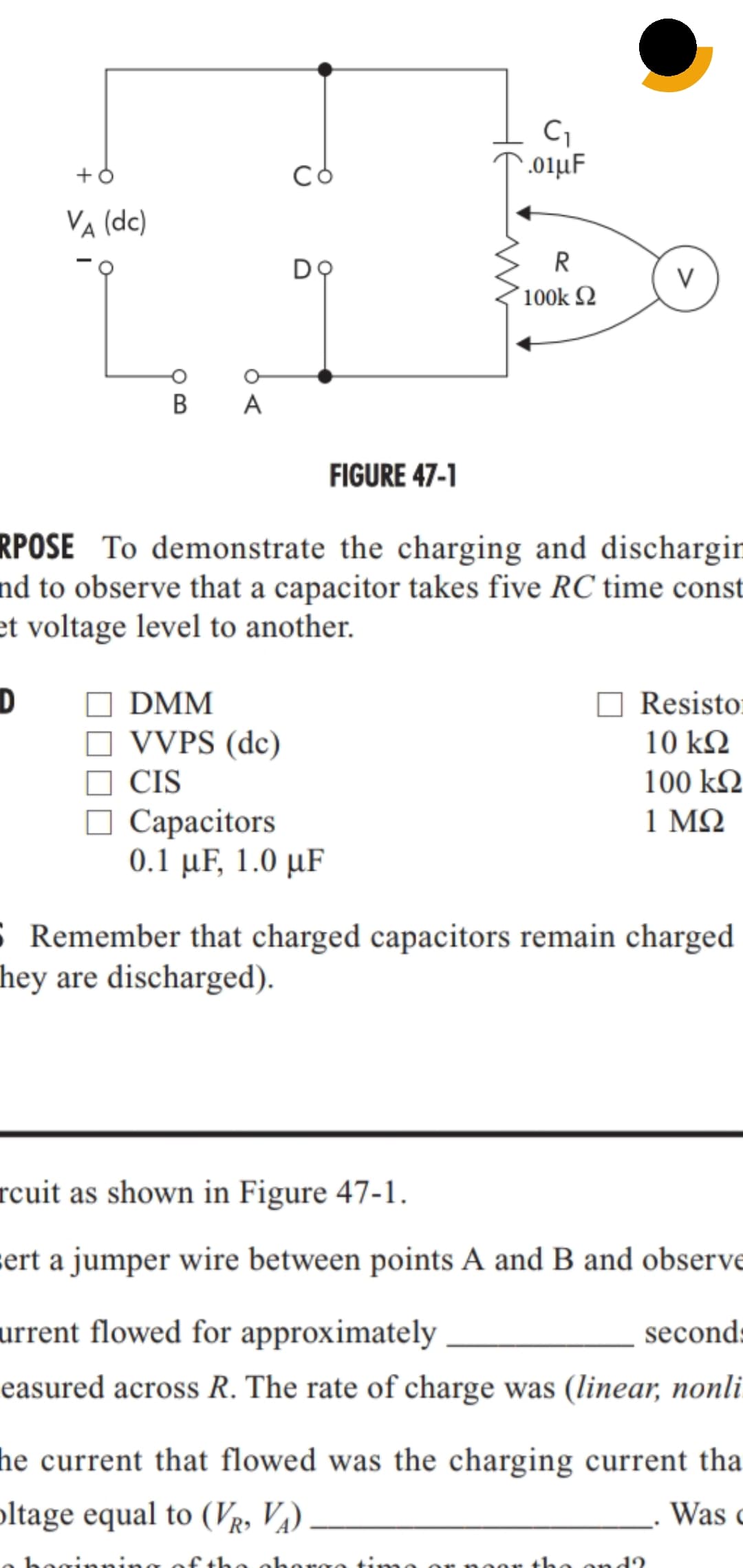Set VA at 20 volts. Insert a jumper wire between points A and B and observe the meter action. Remove the jumper from points A and B. Reverse the polarity of the voltmeter. Insert a jumper between points C and D and observe the meter action during discharge of the capacitor. mOBSERVATION Discharge time was approximately _____ seconds. The rate of discharge was (linear, nonlinear) ____________________. nCONCLUSION Did the capacitor take the same time to discharge through R as it did to charge? ________. At the end of the discharge time VC = ________ ; VR = ________ V. 4. Remove the jumper from points C and D. Change the DMM polarity from the original setup if it is not an “autopolarity’’-type meter. Change R to a 1-MΩ resistor. Repeat the sequence of steps 2 and 3. mOBSERVATION Charge time was approximately _________ seconds. Discharge time was _________ seconds. nCONCLUSION Increasing R increased the charge time because the charging current was limited to a smaller value. Thus, it took longer to obtain a given potential difference or ____________________ across the C.
Set VA at 20 volts. Insert a jumper wire between points A and B and observe the meter action.
Remove the jumper from points A and B. Reverse the polarity of the voltmeter. Insert a jumper between
points C and D and observe the meter action during discharge of the capacitor.
mOBSERVATION Discharge time was approximately _____ seconds.
The rate of discharge was (linear,
nonlinear) ____________________.
nCONCLUSION Did the capacitor take the same time to discharge through R as it did to charge?
________. At the end of the discharge time VC = ________ ; VR = ________ V.
4. Remove the jumper from points C and D. Change the DMM polarity from the original setup if it is not
an “autopolarity’’-type meter. Change R to a 1-MΩ resistor. Repeat the sequence of steps 2 and 3.
mOBSERVATION Charge time was approximately _________ seconds. Discharge time was _________
seconds.
nCONCLUSION Increasing R increased the charge time because the charging current was limited to
a smaller value. Thus, it took longer to obtain a given potential difference or
____________________ across the C.

Trending now
This is a popular solution!
Step by step
Solved in 3 steps with 3 images




